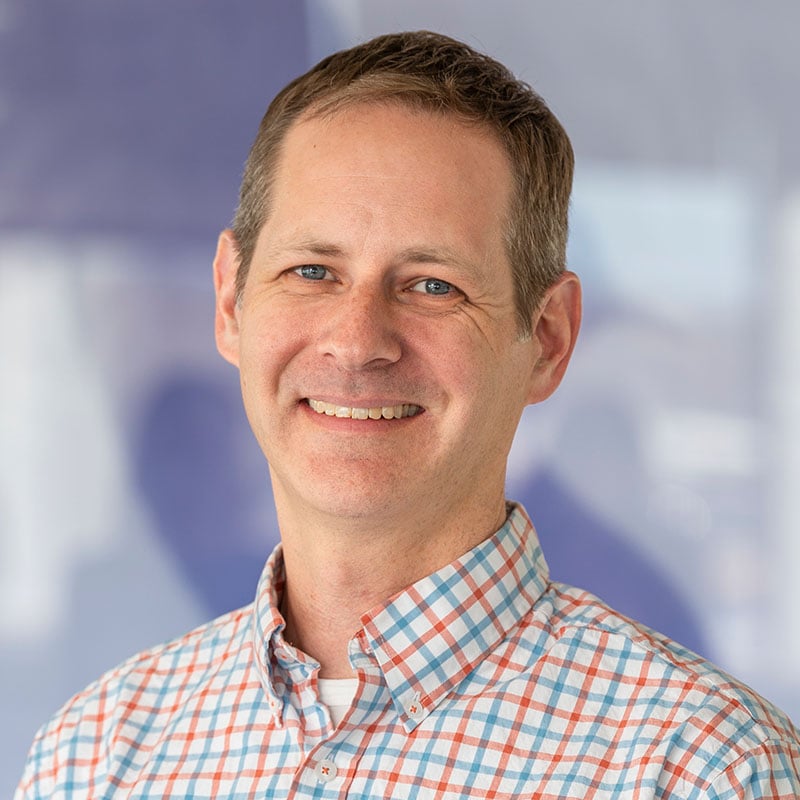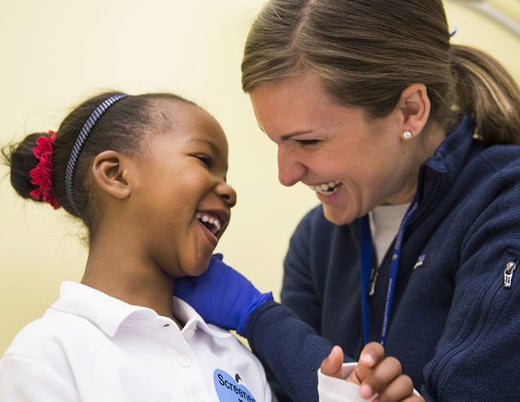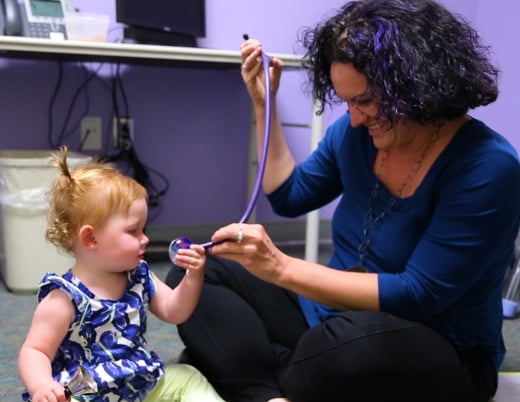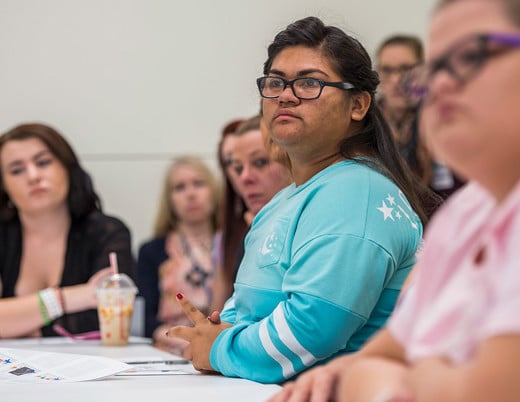How can a team of experts collaborate to slow the progression of a rare genetic disorder known as multicentric carpotarsal osteolysis?
When Children’s Hospital Colorado’s whole-exome sequencing uncovered 2-year-old Sophie Rosenberg’s very rare disease, there were fewer than 60 patients with multicentric carpotarsal osteolysis, or MCTO, described in the literature. MCTO is a genetic disease that can lead to the progressive loss of some of the bones in the hands and feet, as well as kidney failure. When Sophie’s mom, Lauren Rosenberg, learned just how rare this condition is, she enlisted a team of experts from around the world to create a better understanding of MCTO. Her hope was they could learn enough to slow the disease’s progression. That’s how the nonprofit Sophie’s Neighborhood was born.
Learning of the MCTO diagnosis
In March 2020, just days before COVID-19 shut down the United States, Rosenberg and her family learned the news of Sophie’s MCTO diagnosis, marking the start of a worldwide search for answers.
When Sophie was just 15 months old, she started experiencing pain while trying to stand up. Initial tests revealed inflammation in her ankles and an underdeveloped talus bone in her right foot. Once doctors confirmed she had MCTO, both her family and her care team at Children’s Colorado were learning about this condition for the first time and realizing very little medical information exists on MCTO.
“There was a huge learning curve happening all at once in that period of time,” Rosenberg says. “When we heard the words that no one knew how to treat this effectively or really understood what it was at all, I said, ‘Well then, we are going to be the ones to figure this out.’”
Assembling a multidisciplinary team
Pediatric endocrinologist Nina Ma, MD, spearheads Sophie’s clinical care at Children’s Colorado. In a serendipitous alignment of events, at the time of Sophie’s diagnosis, Dr. Ma was in the process of establishing Children’s Colorado’s Pediatric Bone and Mineral Metabolism (BAMM) Program that includes a clinic with a multidisciplinary, comprehensive care approach for children with various bone and mineral conditions.
“Sophie’s story motivated and inspired me to expedite the launch of the BAMM clinic. It’s a multidisciplinary clinic tailored to benefit someone like Sophie,” says Dr. Ma, who is the founder and director of the BAMM clinic and program at Children’s Colorado.
The BAMM multidisciplinary clinic team huddles once a month and brings together Dr. Ma; Nancy Hadley-Miller, MD, from orthopedics; Bradley Dixon, MD, section head of nephrology; a nutritionist and nurse coordinator.
“MCTO requires care coordination across various subspecialties, and we were able to extract that expertise from within Children’s Colorado,” Dr. Ma says. “We very quickly went from having no structured approach to the care of MCTO to being a team of care providers determined to help develop evidence-based care for patients with MCTO.”
The care team collaboration at Children’s Colorado does not end there. The team extends to rheumatologist Jennifer Soep, MD, child life specialists, occupational therapists and others.
“None of Sophie’s doctors had any experience with the condition before, but I have been blown away by their care, concern and interest in learning more and trying to help Sophie,” Rosenberg says. “None of her doctors have shied away from not knowing. They just wanted to learn and help us.”
Advancing research through Sophie’s Neighborhood
While the Children’s Colorado care team continues to collaborate and learn more about this rare condition through Sophie’s unique case, the nonprofit Sophie’s Neighborhood is all about bringing together a global team of experts to advance the research related to MCTO. The group is exploring several concurrent research projects to investigate not only the specifics of the disease, but also the history.
The team needed a bone marrow specialist and someone who understood the intricacies of supporting research for rare diseases — and that’s when Children’s Colorado’s hematologist-oncologist Craig Forester, MD, joined Sophie’s Neighborhood to help drive new research projects.
“This is part of our obligation as pediatricians,” Dr. Forester says. “We have parents who have children with conditions the world may have never seen before. They are confused, they have a lot of questions and they are scared. It’s part of our obligation to learn more and to help families understand more about their children.”
Dr. Forester is no stranger to rare diseases. His work revolves around gene expression and how it impacts rare conditions like pediatric bone marrow failure. “I’m interested in understanding what we don’t know anything about,” Dr. Forester says. “Initially, I made myself a hub to collect and store valuable samples to answer questions about Sophie and other kids with MCTO.”
With his research experience of rare conditions, Dr. Forester built the protocols and designed experiments to store blood samples from patients with MCTO, isolate different parts of the samples and then analyze them further by dispersing those samples out to various partners for testing to learn more. As visibility for this rare disorder grows, more institutions are sending in samples to Dr. Forester’s team and other University of Colorado biorepositories to build up this database and contribute to the process.
“Dr. Forester has been amazing,” Rosenberg says. “He’s able to try to think about this from the perspective of hematology and of the role that the bone marrow may be playing in this.”
In addition to Dr. Forester’s work and collaboration with institutions like Stanford University, Sophie’s Neighborhood has tapped into biosciences and biotech companies in Boulder, Colorado to learn more about MCTO specifics like proteins that could be targeted for treatment, looking into Sophie’s exact mutation and doing transcription analysis on MCTO. The group is collaborating with Satoru Takahashi, MD, PhD, in Japan on additional research models to identify possible FDA-approved medications that might be able to work for MCTO treatment, and the next step is narrowing down that list.
Dr. Ma is leading the natural history study for MCTO, as they are interested in learning more about the natural history of rare bone diseases by collecting and storing medical and radiographic information for pediatric and adult patients with MCTO.
“Sophie’s Neighborhood helped facilitate the alliances created between various scientific and research teams and the clinical team,” Dr. Ma says. “We are hopeful that these early collaborations will help yield meaningful results soon.”
Looking ahead to better understanding MCTO
With research and clinical care happening side-by-side, Sophie’s Neighborhood has made real progress in the search for more information about MCTO and determining options for the best care possible.
“Having all of those important doctors in Sophie’s care communicating with each other and understanding each other’s roles has made the experience so much more comfortable for our family,” Rosenberg says, “and we feel that they all really understand and know Sophie.”
Children’s Colorado’s doctors have been alongside Sophie and her family on this MCTO journey for nearly three years now. They continue to work hard to try and slow down the rate of progression of Sophie’s disease.
“She’s comfortable, she’s not in pain and she’s mobile. Whereas a lot of children with this disease are wheelchair bound and can’t really have function of their hands very well, she still does,” Rosenberg says.
Sophie, now 5, enjoys art, singing, dancing and swimming, which is a part of her warm water occupational therapy that helps strengthen her muscles while remaining gentle on her joints. She has inspired her care team at Children’s Colorado to continue learning about this rare condition and step up as leaders on MCTO.
“Lauren has a natural ability to inspire people to want to help, research and devote professional time to studying MCTO,” Dr. Ma says. “She’s really done a tremendous job of bringing together global thought leaders in the health sciences.”
Dr. Ma has now dedicated a significant part of her time to understanding MCTO and sharing knowledge on the international stage. She and colleagues also recently published a paper describing a contemporary perspective on the skeletal phenotype of MCTO.
“If we keep our eye on the prize, which is to improve the care and outcomes of patients with MCTO, collaboration is crucial,” she says.
Featured Researchers

Nina Ma, MD
Director
Bone and Mineral Metabolism Program
Children’s Hospital Colorado
Associate professor
Department of Pediatric Endocrinology
University of Colorado School of Medicine

Craig Forester, MD
Hematology/oncology
Children’s Hospital Colorado
Assistant professor
Department of Pediatrics
University of Colorado School of Medicine





 720-777-0123
720-777-0123










